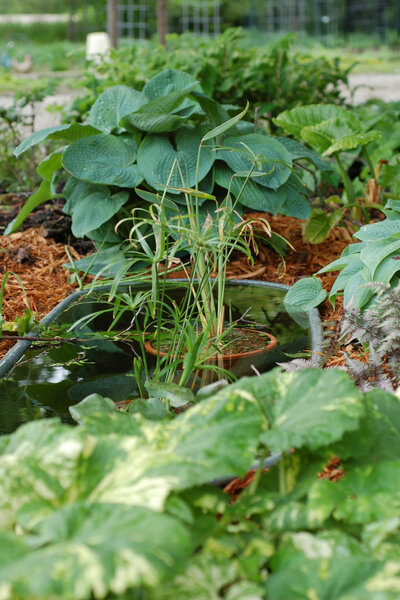The ultimate in easy ponds - almost
Loading...
I was never seduced by those “EZ 1-2-3!” garden articles about creating a water feature.
Seems like they all said was, “Just dig a hole! Just throw down a liner! Edge it with rocks! Voila: It’s your new pond!”
I’ve seen the results of these installations. They look like mortar craters filled with split-pea soup.
Because you really do need an electric filter. And a pump. And running water. And house hookups and trenching to hide the wires and pipe and assembly.
Otherwise: Algae. Dead fish. Large eyesore. Irate wife.
Small pond using equipment on hand
So I thought I’d do water gardening on a much smaller scale – an installation of such a size that the entire pond could be actually removed come the onslaught of winter. No fall cleaning, no hip waders, no frozen fingers.
Well, it almost worked.
Because I sold all my llamas and miniature fainting goats and the little donkey, I had an empty galvanized-steel water trough of just the right size. Not too big, not too small: A Goldilocks kind of water feature.
So I dug a hole, used builder's sand as a base and for ease in leveling the trough, and put in just enough water for the trough to settle into the sand. Then I tweaked it a little at a time to get the trough perfectly level, put in a half-inch layer of pea gravel, and filled it all the way with water.
With the addition of a little mulch around it, you could barely tell there was a big ol’ honkin’, shiny piece of agricultural equipment down there.
Now for the fish
Add a few edging plants, surround with tropicals and – hey! – time to go fish shopping. I went the cheap route and got a 1-inch-long catfish to help keep down the algae and a handful of mosquito fish to cut down on the bug bites.
It all looked pretty dang great – in a diminutive sort of way – especially as the hostas, ferns, and whatnot started to encroach on water’s edge. Even the potted papyrus in the tub started thriving.
But after a month or so, local wildlife began snacking on the fish, and the water got ever greener.
Then lo and behold, some snails showed up and slurped up some of the green goop. Not bad! And then the frogs arrived. Now they were fun. Every time I’d step out the side door of the house I’d hear at least one loud splash.
However, toward the end of the season, as the first of the leaves fell, things went straight to … well, somewhere very far south.
Seems that if even a single leaf hit the pond, it would spontaneously combust, turning immediately to some viscous brown bile. Really icky stuff. But then two leaves would fall into the pond. Then three. Then 103.
It was time to throw in the trowel.
This was an EZ 1-2! process. Remove trough, fill hole.
So was this little experiment a shiningly successful bit of landscape architecture or a dismal defeat approaching Superfund Site? Somewhere in between, of course. Ah, but a man’s reach should exceed his grasp, or what’s a garden for?
What else I’m into this week: Keeping the fireplace stoked.
-----
Craig Summers Black, The Transplanted Gardener, is an award-winning garden writer and photographer who blogs regularly at Diggin' it. You can read more of what he's written by clicking here. You may also follow Craig’s further adventures in gardening, music, and rural life on Twitter.






